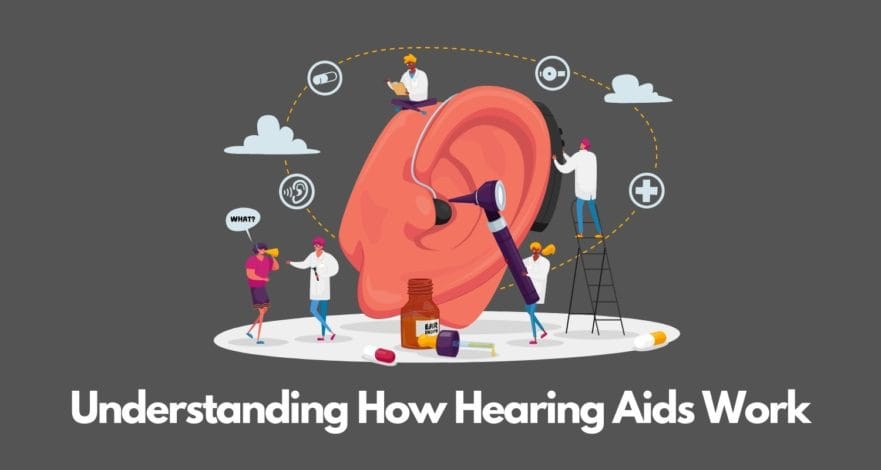If you have hearing loss, it is important to take the time to learn more about your options for hearing aids. Hearing aids are electronic devices that are designed to detect and analyze sound, alleviating hearing loss symptoms and maximizing hearing capacity. These hearing instruments are the most common treatment for hearing loss. A common misconception about hearing aids is that they are bulky and outdated devices that are mainly worn by older adults
Today’s hearing aids are savvier and sleeker than ever before. Hearing aids have experienced significant innovation over recent years. There is a wide range of technologies, styles, and features available to you. With so many to choose from, it can be overwhelming to navigate your options. Learning about what hearing aids offer can significantly help you when selecting the device that is best for you.
Common Components of Hearing Aids
Though there are numerous types of hearing aids, all devices consist of the same foundational components. This includes:
- Microphone: microphones pick up soundwaves from the environment. These soundwaves are analyzed by a processing chip which adjusts the sound to meet the specific needs of the wearer.
- Amplifier: these processed sound waves are sent to the amplifier which intensifies these signals.
- Speaker: the speaker receives sound signals and sends them to the inner ear through tubing that connects hearing aid components.
The inner ear receives adjusted sound waves and is better able to translate them into electrical signals which are carried to the brain via the auditory nerve. The brain is then able to further analyze and assign meaning to the sound, enabling us to understand what we hear.
Types of Hearing Aids
Even though all hearing aids essentially share the same construction, there can be significant differences in the styles and features they offer. There are several types of hearing aids which are worn differently and are suited better for specific types of hearing loss. Common hearing aids styles fall into two categories:
- Behind-the-Ear (BTE): these types of hearing aids are likely what you think of when you imagine a hearing aid device. BTE hearing aids are worn behind the ear with a small tube connecting it to an ear piece that sits in the ear canal. It’s a larger type of hearing aid that is also powerful so it tends to be better suited for people with more severe forms of impaired hearing. A few BTE styles include mini behind the ear (Mini BTE) and receiver in the Ear Canal (RIC).
- In-the-Ear (ITE): ITE hearing aids are custom made (based on molds taken of the wearer’s ears) to fit in the ear. They are smaller devices that are less visible and tend to be better suited for more mild forms of hearing loss. Common ITE types include in the ear canal (ITC), invisible in the canal (IIC), and completely in the canal (CIC). A CIC hearing aid is the smallest type of hearing aid. It is worn far inside the ear canal and has a small latch which is used to insert and remove the device.
With so many styles of hearing aids you are probably wondering how to select the device that is perfect for you.
Choosing the Best Device for You
There are a few factors that inform the type of hearing aid that would be most effective for you. This includes the specific type of hearing loss you have, the degree of impairment, and your preferences. We will discuss important lifestyle considerations with you: profession, hobbies, exercise, social engagement etc. These factors help identify the type of hearing aid that can best integrate into your daily life, supporting your hearing in the environments you regularly navigate.
Hearing Aid Technology
Most of today’s hearing aids are digital. This means that they are able to absorb sound and manipulate those signals to adjust in ways that meet the wearers specific needs. Digital hearing aids can also offer various additional features so another important consideration is the hearing aid technology you are interested in. There are several features and technologies that are designed to enhance connectivity and sound quality. This includes feedback reduction, voice recognition, and automatic volume regulation.


